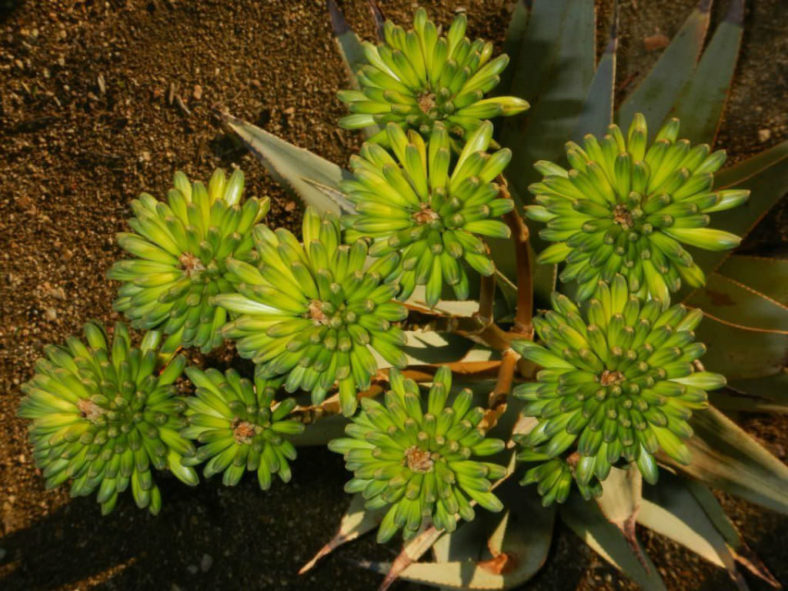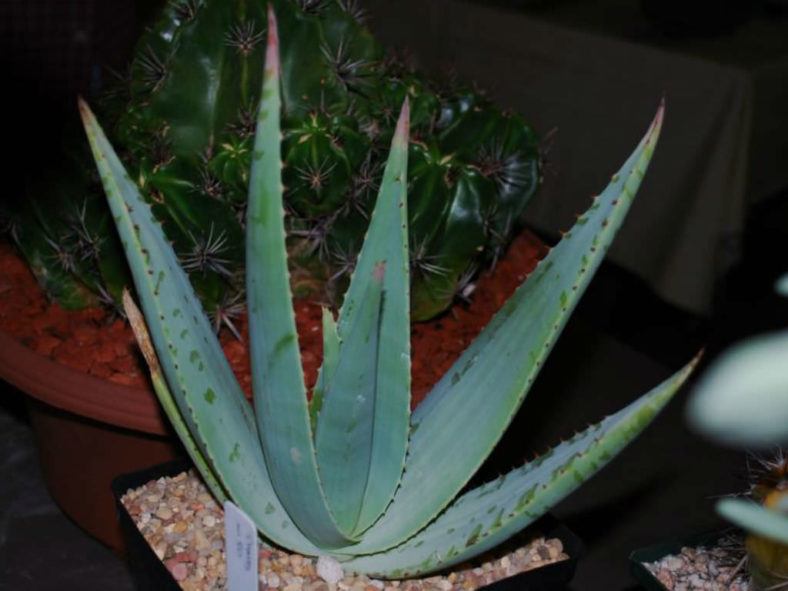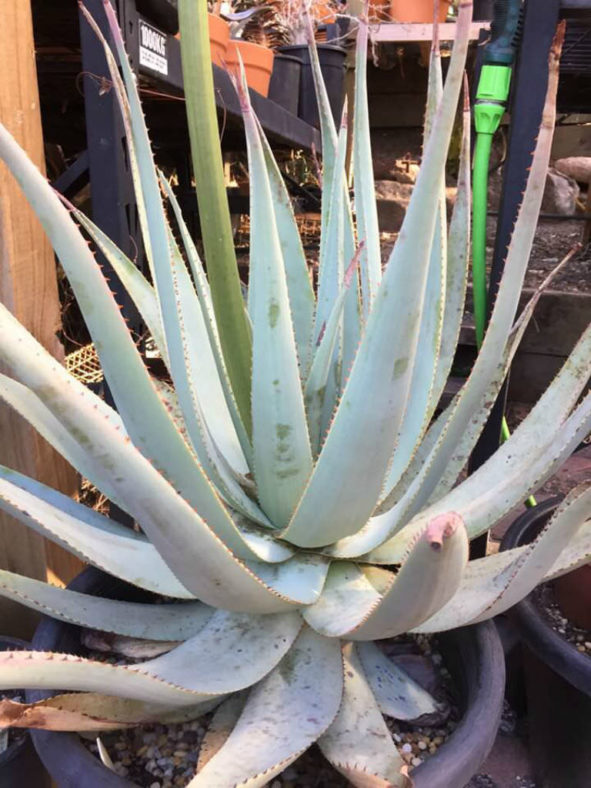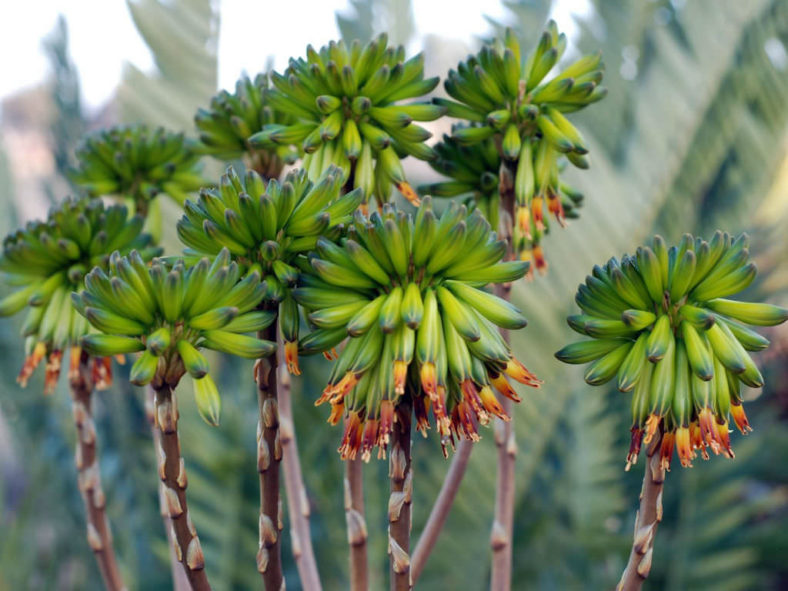Scientific Name
Aloe viridiflora Reynolds
Common Name(s)
Green-flowered Aloe
Scientific Classification
Family: Asphodelaceae
Subfamily: Asphodeloideae
Genus: Aloe
Etymology
The specific epithet "viridiflora (vir-id-uh-FLOR-uh)" means "having green flowers" and refers to the flower color of this species. It is the only known Aloe with green flowers.
Origin
Aloe viridiflora is native to Namibia. It occurs in subtropical or tropical dry shrubland, savanna, and rocky areas.
Description
Aloe viridiflora is a stemless succulent that forms dense rosettes of blue-green leaves covered with a powdery bloom. The leaves are lance-shaped, measuring up to 2 feet (60 cm) long and 3.2 inches (8 cm) wide. The leaf margins are lined with reddish-brown teeth.
The flowers are green to lemon-yellow and appear in dense clusters on branched flower stalks that can grow up to 5 feet (1.5 m) tall in winter.

How to Grow and Care for Aloe viridiflora
Light: When growing Aloes indoors, place your plants in a southern or southwest-facing window with plenty of bright, indirect light. Outdoors provide light shade, especially during the hottest parts of the day.
Soil: Plant Aloes in well-drained soil specially formulated for cacti and other succulents, or make your soil mix. Drainage is essential because too much moisture around roots can cause root rot.
Hardiness: Aloe viridiflora can withstand temperatures as low as 25 to 50 °F (-3.9 to 10 °C), USDA hardiness zones 9b to 11b.
Watering: These succulents need regular watering but are very tolerant of drought conditions for short periods. Water deeply, but only when the soil is dry. Cut back on watering during the winter months.
Fertilizing: Aloes generally do not require fertilizer but may benefit from the extra nutrients.
Repotting: These plants are not particularly fast-growing and will only rarely need repotting. Repot them in the spring in a container a few inches larger in diameter every few years to keep them from becoming rootbound.
Propagation: Propagating Aloe can be done using offsets, cuttings, or seeds from a mature plant.
Learn more at How to Grow and Care for Aloe.
Toxicity of Aloe viridiflora
Aloe viridiflora is not listed as toxic for people and pets but can produce hallucinations when ingested, and it is occasionally used in shamanic rituals.
Links
- Back to genus Aloe
- Succupedia: Browse succulents by Scientific Name, Common Name, Genus, Family, USDA Hardiness Zone, Origin, or cacti by Genus
Photo Gallery
Click on a photo to see a larger version.


